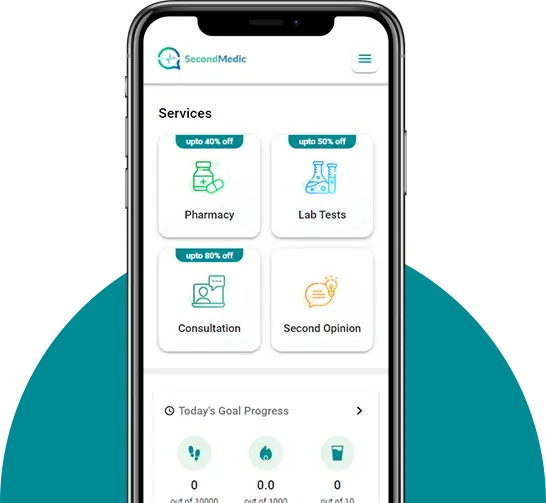- Published on: Mar 13, 2024
- 2 minute read
- By: SecondMedic Expert
Get Lean & Strong: Simple Tips To Build Muscle And Shed Fat
In the world of fitness, there's a common goal that many people strive for: building muscle and losing fat. Whether you're looking to get stronger, improve your physique, or simply feel better in your own skin, this guide is here to help you achieve your goals. Let's dive into the basics of building muscle and losing fat in a way that's easy to understand and implement.
Understanding the Basics
Before we jump into the nitty-gritty details, it's essential to understand the fundamentals of muscle building and fat loss. When it comes to building muscle, it all boils down to resistance training. This involves lifting weights, performing bodyweight exercises, or using resistance bands to challenge your muscles and stimulate growth.
On the other hand, losing fat requires a combination of proper nutrition and regular physical activity. While there's no one-size-fits-all approach, focusing on a balanced diet and incorporating cardio exercises can help you shed excess fat while preserving lean muscle mass.
Nutrition Matters
When it comes to building muscle and losing fat, nutrition plays a crucial role. To build muscle effectively, you need to consume enough protein to support muscle growth and repair. Aim for lean sources of protein such as chicken, fish, eggs, tofu, and legumes.
In addition to protein, make sure to include plenty of fruits, vegetables, whole grains, and healthy fats in your diet. These foods provide essential nutrients, vitamins, and minerals that support overall health and optimize your body's performance during workouts.
To promote fat loss, focus on creating a calorie deficit by consuming fewer calories than your body needs to maintain its current weight. However, it's essential to do this in a sustainable way by avoiding crash diets or extreme calorie restriction. Instead, aim for a gradual and moderate calorie deficit of 500-750 calories per day.
Resistance Training
As mentioned earlier, resistance training is key to building muscle. Whether you're a beginner or an experienced lifter, incorporating compound exercises such as squats, deadlifts, bench presses, rows, and overhead presses into your routine can help you maximize muscle growth.
In addition to compound exercises, don't forget to target specific muscle groups with isolation exercises such as bicep curls, tricep extensions, leg curls, and calf raises. Aim for a balanced workout routine that targets all major muscle groups to ensure overall muscle development.
When it comes to resistance training, consistency is key. Aim to strength train at least 2-3 times per week, allowing your muscles time to recover between sessions. Focus on progressively overloading your muscles by gradually increasing the weight, reps, or sets over time to continue seeing results.
Cardiovascular Exercise
While resistance training is essential for building muscle, incorporating cardiovascular exercise into your routine can help you burn fat and improve your overall fitness level. Whether you prefer running, cycling, swimming, or dancing, aim to incorporate at least 150 minutes of moderate-intensity cardio or 75 minutes of vigorous-intensity cardio per week.
In addition to traditional cardio workouts, consider incorporating high-intensity interval training (HIIT) into your routine. HIIT involves alternating between short bursts of intense exercise and brief periods of rest or low-intensity recovery. Not only does HIIT help you burn calories more efficiently, but it also promotes fat loss while preserving lean muscle mass.
Rest and Recovery
Last but not least, don't underestimate the importance of rest and recovery in your fitness journey. Giving your body time to rest and repair is essential for muscle growth and overall performance. Make sure to prioritize quality sleep, aiming for 7-9 hours of uninterrupted sleep per night.
In addition to sleep, incorporate rest days into your workout routine to allow your muscles time to recover and rebuild. Active recovery activities such as yoga, stretching, or light walking can also help improve circulation, reduce muscle soreness, and enhance overall recovery.
Conclusion
Building muscle and losing fat is a journey that requires dedication, consistency, and patience. By focusing on proper nutrition, incorporating resistance training and cardiovascular exercise into your routine, and prioritizing rest and recovery, you can achieve your fitness goals in a sustainable and healthy way.
Remember, everyone's journey is unique, so listen to your body, adjust your approach as needed, and celebrate your progress along the way. With the right mindset and commitment, you can build muscle, lose fat, and become the best version of yourself. Here's to your health and fitness success!
Read FAQs
A. Yes, it's possible, but challenging. Focus on a balanced diet, strength training, and cardio exercises.
A. Combine strength training, cardio workouts, and a balanced diet rich in protein and healthy fats to target belly fat and build muscle.
A. The 30 30 30 rule involves consuming 30% of calories from protein, 30% from fats, and 30% from carbohydrates to support weight loss and muscle building.









